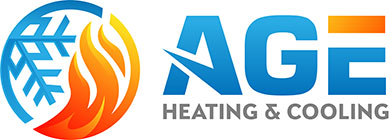
If you’re thinking over air conditioner installation in Sandpoint, you should also be investigating your new air conditioner’s SEER rating.
SEER stands for Seasonal Energy Efficiency Rating. Basically, it looks at how capable your air conditioner is at changing electricity into chilled air. A greater number indicates your air conditioner is more efficient, which is good for your electric costs.
However, there are a lot of varying models to choose from for air conditioners. And a greater SEER ranking typically includes a higher price. So, how can you find out which one is right for your home?
At Age Heating & Cooling, we give you a free, no-pressure home comfort analysis. You can schedule one by contacting us at 208-603-2210. Our experienced air conditioner installers will work with you to help you locate the right air conditioner for your needs. Plus, they’ll also offer you a free, no-obligation estimate.
For the time being, let’s review SEER ratings and how they can impact your home’s comfort. And your energy bills.
What Does the SEER Rating Really Matter?
In 2016, the federal government developed new SEER guidelines. New air conditioners must be at least 13 SEER in the northern United States and 14 SEER in the southeast and southwest. If you’re unsure when you had your air conditioner installed or what its SEER rating is, you can locate the sticker on the unit outside your house. If you can’t find the sticker, you can give us a call at 208-603-2210 for assistance.
If your air conditioner was replaced before that date, it’s presumably much less efficient. Cooling technology has swiftly changed in the past several years, with huge progress in energy efficiency and smart home capacity. Connecting your new air conditioner with a smart thermostat could help you conserve more on AC costs, as the thermostat can intuitively adjust your temperature settings when you’re away.
If your current air conditioner has a SEER rating between 8 and 10, installing a 14-SEER system could save you around 30–50% on annual electrical bills. Your savings are tied to your air conditioner size and your temperature settings.
Is the highest SEER Rating the Best?
An air conditioner with a higher SEER rating will be more efficient at converting electricity for cooling. The best efficient systems, which can go as high as 26 SEER, include ENERGY STAR® designation. This certification means the air conditioner has achieved EPA requirements for energy savings and environmental conservation.
While ENERGY STAR air conditioners are frequently more costly, you’ll normally get the difference returned over the years through cheaper utility bills. These air conditioners, which are usually rated 16 SEER and better, need about 8% less energy than other new models, according to ENERGY STAR.
One of the largest differences between a 14 SEER and 16 SEER is variable-speed technology. A variable-speed air conditioner can operate at different speeds. This fine-tunes comfort for your house while keeping your electrical expenses low. It can also keep temperatures and humidity more consistent, since it can run for longer without needing a lot more electricity.
When adding a variable-speed air conditioner, you’ll have to ensure that your furnace or air handler is compatible. This is since your air conditioner uses this system’s blower to send chilled air around your residence. Furnaces only work for approximately 20 years, so if yours is getting old, we advise getting furnace installation at the same time so you can get all the benefits of your variable-speed air conditioner.
When you’re prepared to replace your air conditioner, the cooling pros at Age Heating & Cooling are ready to support you. Reach us at 208-603-2210 to request your free home comfort analysis now.







